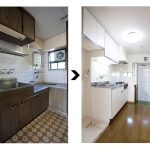In the application of pressure measurement, there can be multiple terms and even multiple names used which can be more than a bit confusing to someone not working continually in the field.
In addition to different terms, sometimes the incorrect term can be used in conversation or even in technical literature, which further complicates the matter. A good example of this is the use of the terms differential pressure transducer and differential pressure transmitter.
Some individuals may use the term interchangeably, but there is a slight difference between the two. There are still more similarities than differences, which is most likely why they have become synonymous in many people’s vocabulary.
The Difference
Both the differential pressure transducer and the transmitter are going to record a change in the pressure in a system, convert it into an electrical output signal and send it to a recording or reading device.
However, the transducer and the transmitter to not send the same type of electrical signal to the receiving device. A transducer will end the signal in millivolts or volts, while the transmitter sends the signal in milliamps. Typically, the distance over which the signal has to travel is the key factor in making the choice as the transmitter can send more accurately as they are less disrupted by electromagnetic interference or noise as compared to voltage sent by the transducer.
Terms to Understand
When selecting a differential pressure transducer, there are a few different terms to know and understand. By having this information when you are choosing the right transducer you will choose the one that is best suited to the specific application.
Over-range capability is an essential factor as it provides information on how a transducer will perform under pressure. Each transducer, as with each transmitter, will have a recommended pressure range. The over-range capacity is the maximum level of pressure that the component can tolerate and still provide an accurate reading. The range is the lower and upper limits and typically it is recommended to choose a transducer that is 50 or 60% higher at the maximum range than the typical system pressure.
The burst pressure is the highest possible pressure level before transducer failure. This is the maximum level before the transducer leaks or completely fails, rendering it inoperable. It is not the same as the over-range capacity, which is more closely related to the accuracy of the reading and data recorded.






